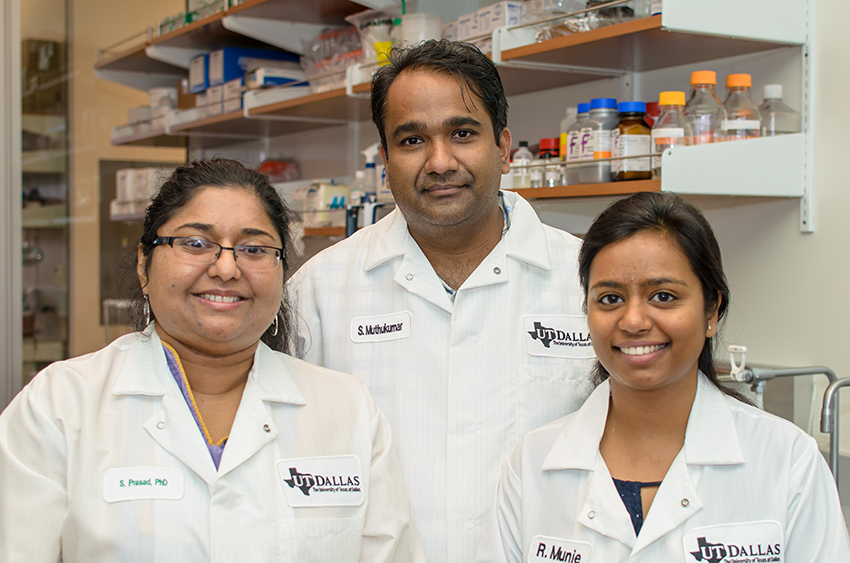UT-Dallas researchers recently developed a technique that uses sweat to detect blood sugar levels in the body.
Shalini Prasad, UTD biomedical engineering professor, said she and her team hope to use this technique to produce biosensors that can monitor glucose in diabetics, eliminating the need for patients to constantly prick their fingers with needles.
“The technique measures electrical changes that occur at sensor interfaces when target biomolecules bind to the sensor surface,” Prasad said. “By using [these] methods, this technique [can be] implemented in complex and variable composition fluids, such as blood, sweat, tears, saliva and urine.”
Prasad said that her team began their research by using a previous version of this technique to detect cortisol, a steroid hormone, in sweat. She said the team had to make two major modifications in order to monitor glucose levels using sweat. The first involved changing the chemistry and material of the sensor.
“We were [able to] detect glucose from ultra-low volumes of sweat … without the use of iontophoresis,” Prasad said.
Iontophoresis involves inserting ionic medicinal compounds into the body through application of a local electric current. Prasad said her team was able to bypass this method by modifying the weave of the sensor’s fabric and changing its surface properties so it can better bind with other materials.
“Traditional Indian textiles were the inspiration for this device,” Prasad said. “The weave of Indian sarees and dhotis help people stay cool in tropical climates, and the wicking profiles offered by these fabric play a significant role in their function. We have tried leveraging these mechanisms in the design of the sensor device.”
Prasad said the second change involved tweaking the measurement methodology in order to separate and magnify the various changes at the sensor interface or where the sensor touches the sweat.
According to Prasad, these two modifications helped the team overcome the inherent differences in the composition of an individual’s sweat and allowed them to obtain a stable read even when the sensor was only partially covered with perspiration.
Prasad said because the device naturally adjusts for different skin types and does not require one’s skin to be stimulated, it is suitable for lifestyle-monitoring and can be used by consumers at home.
The estimated cost of this device will be similar to the cost of current blood glucose test strips — 10 to 15 cents per strip — and will be sold with a starter kit and a 30-day supply of disposable test strips.
“What we now have is a phase one working prototype, and we’re actively looking for licensing and commercialization partners,” Prasad said.
According to the American Diabetes Association, approximately 29.1 million Americans have diabetes, with 1.4 million additional Americans being diagnosed with diabetes every year. Of that 29 million, a small portion have Type I, which is unpreventable and usually starts in childhood, and the rest have Type II, which is preventable and can develop at any age.
UT nursing professor Sharon Brown said regardless of what type of diabetes a patient has, they must regularly measure their blood sugar levels.
“If this technique is proven to be accurate, it would be a huge advantage for people with diabetes,” Brown said.
Current monitoring techniques require patients to draw blood by pricking their fingers with a needle, something they must do multiple times a day, according to Brown.
“That’s pricking their fingers 4–6 times a day, and people will begin to resist,” Brown said. “Anything like [this new biosensor] that’s noninvasive and not associated with pain is huge, and I hope to see this in the future.”















